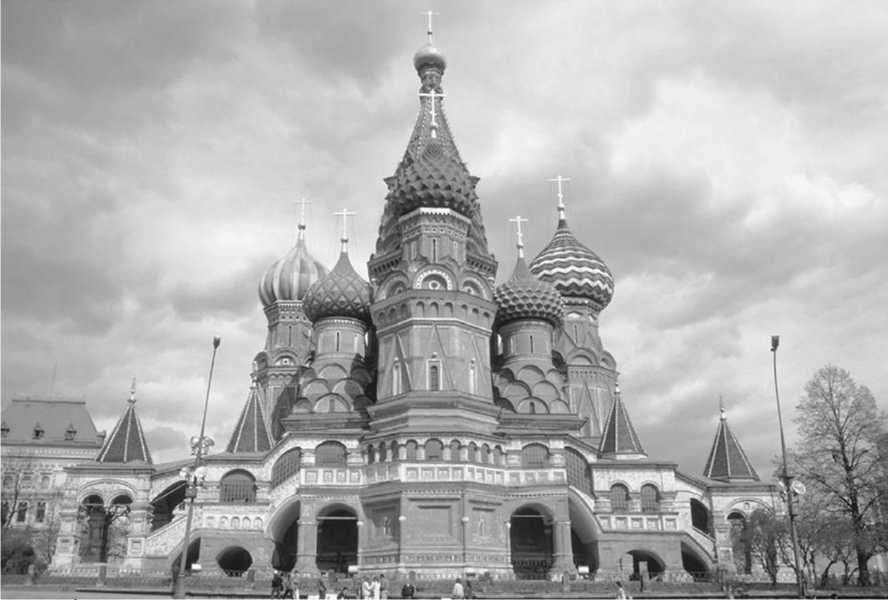The region just north of the Black Sea has been inhabited since ancient times. All the tribes entering Europe from Asia, including not only the Huns and Turkic peoples but later the Mongols, passed through it; yet the Slavs remained. They were probably the founders of Kiev (kee-YEV), today the capital of Ukraine. Then in 862 the Vikings known as the Varangians arrived from Sweden and established the city of Novgorod (NAWV-guh-rud). Eventually one of the Vikings, whose name was Rurik (died c. 879), emerged as their leader, and founded a dynasty that would remain influential until 1598.
Rurik extended Slavic influence north, into the land of the Finns; but the real empire-building began with Oleg (died c. 912), who merged Kiev and Novgorod into a single entity called Kievan Rus or Kievan Russia. Oleg's daughter-in-law Olga accepted

St. Basil's Church, located in Moscow, Russia, is a magnificent example of an Eastern Orthodox church. Photograph by Susan D. Rock. Reproduced by permission of Susan D. Rock.
Eastern Orthodoxy; however, her son rejected it for fear that it would make him a subject of Byzantium. Conversion came during the reign of Vladimir the Great (VLAHD-i-meer; c. 956-1015), who in 987 agreed to marry Anne, the sister of the Byzantine Empire's mighty Basil II.
Vladimir set about forcibly converting Kiev and Novgorod while Basil occupied himself with the Bul-gars. A power struggle followed the death of Vladimir, but Yaroslav the Wise (yuh-ruh-SLAHF; ruled 1019-54) restored order and began building a vast Russian empire that stretched the length of Eastern Europe, from the Gulf of Finland to the Black Sea.




 World History
World History









